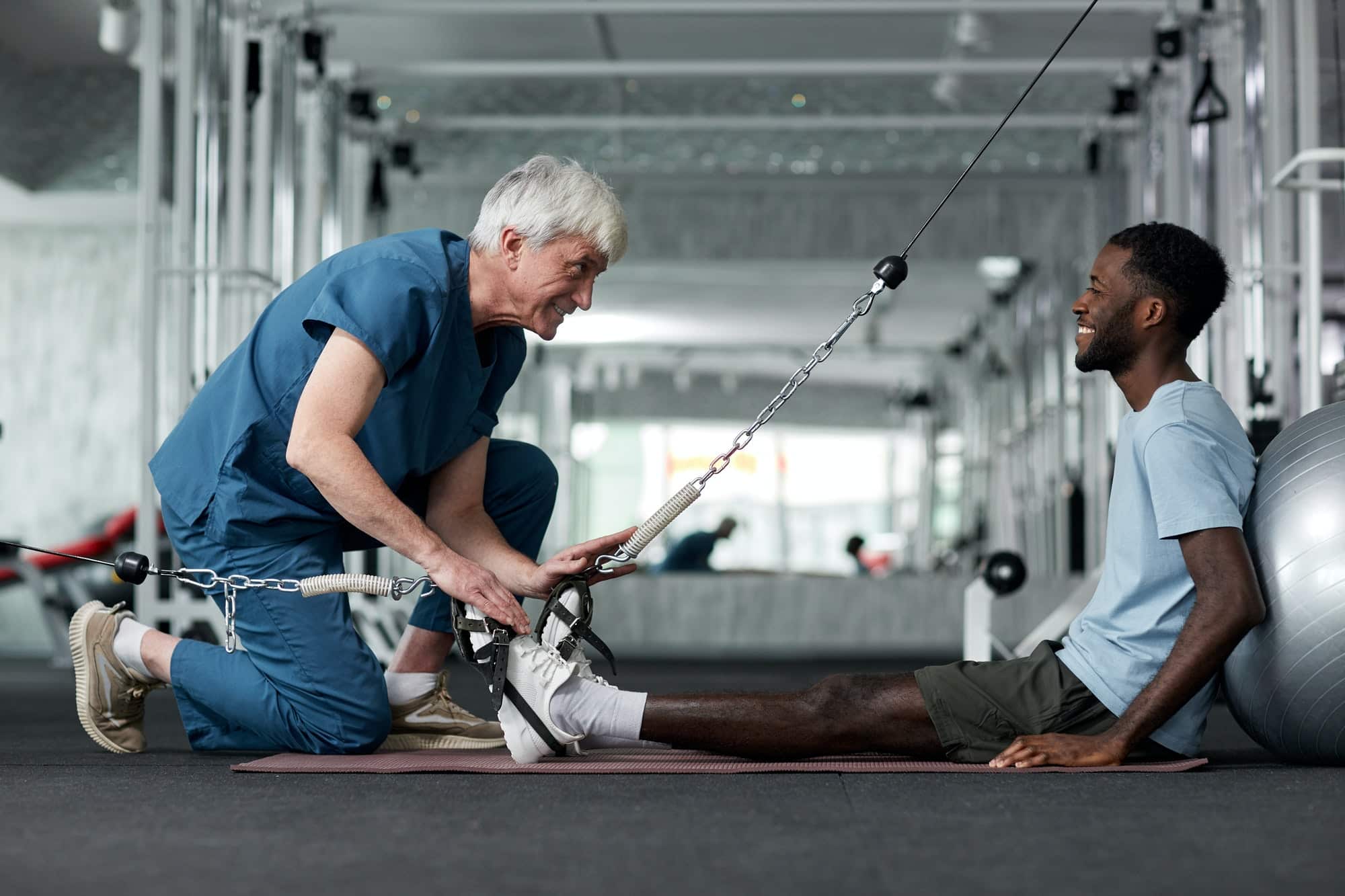In the realm of performance, whether it be in sports or the arts, the pressure to excel can often lead to overuse injuries. Athletes and musicians alike push the boundaries of their physical capabilities, often resulting in a variety of injuries. The manifestation of these injuries can range from a dull, nagging pain to debilitating health complications, impacting both professional performance and personal life.
The world of medicine is constantly evolving, and rehabilitation methods are no exception. Traditional methods may lean towards rest and medication, but innovative approaches are emerging that combine physical and mental exercises, offering promising results. This article explores some of these groundbreaking techniques, applicable to both athletes and musicians alike.
This might interest you : What’s the Role of Custom Footwear in Preventing Injuries for High-Impact Sports Athletes?
The Crossroads of Training and Rehabilitation
For athletes and musicians, training is an essential part of their daily routines. But what happens when an injury occurs? Traditionally, the focus shifts entirely to rehabilitation, putting regular training on the back burner. However, innovative approaches are looking to merge these two aspects, creating a seamless transition from training to rehabilitation and back.
The goal is to ensure that the injured individual remains engaged in their usual activities, albeit in a modified form. For instance, a pianist with a hand injury might spend more time working on foot pedal techniques or studying music theory, while a football player with a leg injury could focus on upper body strength or tactical strategies. This strategy not only aids the physical recovery process but also helps to maintain psychological wellbeing, as the individual stays connected with their passion.
In parallel : What Are the Ethical Considerations in Youth Sports Regarding Competition and Participation?
Sport and music scholars have been researching these combined approaches, often using resources like Google and PubMed to share knowledge and findings.
The Art of Pain Management
A crucial aspect of any injury rehabilitation process is pain management. Overuse injuries, as the name suggests, are typically caused by the repetitive strain of a particular activity, leading to chronic discomfort. Tradely, the approach towards pain management has been largely dependent on medication.
However, there’s been a paradigm shift in this area, with both athletes and musicians adopting more holistic approaches. Techniques such as mindfulness, meditation, and yoga have been proven to aid in pain management and are being increasingly incorporated into rehabilitation programs. More than just physical exercises, these techniques promote mental health, helping individuals cope with the psychological stress that often accompanies injury.
A growing body of evidence on platforms like Google Scholar and Crossref supports these practices. They show that such mind-body techniques can significantly reduce pain perception, making them a valuable addition to the rehabilitation process.
Exercise as Medicine
The phrase ‘exercise is medicine’ is becoming more than just a slogan; it’s a strategy being embraced by health professionals worldwide. Regular and targeted exercise has been found to be an effective tool in preventing and rehabilitating overuse injuries.
For athletes, this might not come as a surprise, as physical exercises are a part of their daily routine. But for musicians, this could be a novel concept. Musicians, like athletes, use specific muscle groups repetitively, and incorporating targeted exercises can help to build strength and resilience in these areas, reducing the risk of overuse injuries.
This approach is becoming a staple in rehabilitation programs, with physiotherapists and trainers designing personalized routines that cater to individual needs and requirements. For instance, a tennis player might focus on strengthening their shoulder and arm muscles, while a violinist might work on their neck and back muscles.
Tailoring Rehabilitation to the Individual
Perhaps one of the most innovative approaches towards rehabilitating overuse injuries is the shift towards individualized care. Each individual, each injury, and each healing process is unique. Therefore, it only makes sense to tailor the rehabilitation process accordingly.
This approach takes into account not just the physical injury, but the person as a whole. This includes factors like their mental health, lifestyle, and even their performance goals. It aims to ensure that the rehabilitation process aligns with the individual’s life, making it more sustainable and effective in the long run.
This is not a one-size-fits-all approach. Instead, it highlights the importance of understanding the unique demands and challenges faced by both athletes and musicians, and designing a recovery plan that caters to these needs.
The Role of Technology in Rehabilitation
In the digital age, technology is playing a pivotal role in rehabilitation. From virtual reality to wearable devices, technology is enabling more precise and effective recovery processes.
Virtual reality, for instance, allows individuals to simulate their usual activities in a controlled environment, aiding both physical recovery and mental readiness. Wearable devices, on the other hand, can track movement and provide real-time feedback, helping individuals monitor their progress and adapt their activities as needed.
Online platforms like Google and PubMed have become valuable resources for accessing the latest research and developments in this area, driving the adoption of technology in rehabilitation programs for both athletes and musicians.
As the world of medicine continues to evolve, these innovative approaches to rehabilitating overuse injuries are offering new hope to athletes and musicians alike. By merging training and rehabilitation, exploring holistic pain management techniques, embracing exercise as medicine, tailoring care to the individual, and harnessing the power of technology, we are paving the way for healthier, more resilient performers.
Technological Advancements and Therapeutic Innovations
In the face of overuse injuries, the technological advancements and therapeutic innovations of the modern world offer a beacon of hope for both musicians and athletes. The shifting sands of the medical field have birthed cutting-edge tools and strategies that have revolutionized the arena of sports medicine and performing arts medicine.
The advent of wearable technology has proven particularly transformative. Devices such as smart watches, heart rate monitors, and fitness trackers allow for precise, real-time monitoring of physiological parameters. This enables athletes and musicians alike to proactively manage their health, adjust their routines, and prevent the risk of overuse injuries.
Further, as an extension of the ‘exercise as medicine’ concept, physiotherapists and trainers often employ biofeedback technology. This technology provides instant, detailed information about an individual’s biomechanics, helping them understand their bodies better and fine-tune their movements to mitigate the risk of injury.
Another technological marvel is virtual reality (VR). VR systems are increasingly being used in the rehabilitation of overuse injuries. Through VR, individuals can simulate their performance scenarios and practice their skills in a controlled environment. This not only aids in physical rehabilitation but also helps with mental readiness, which is crucial for returning to performance after an injury.
Therapeutic innovations also deserve mention. Techniques such as dry needling and manual therapy have proven successful in addressing musculoskeletal disorders resulting from overuse. Dry needling targets myofascial trigger points, providing relief from pain and muscle tension. Manual therapy, on the other hand, involves hands-on techniques to improve mobility and reduce pain.
A multitude of articles on PubMed and Crossref Google cover these technological advances and therapeutic innovations, driving their adoption in the rehabilitation of overuse injuries.
Conclusion: Toward a Future of Resilient Performers
The world of performance—whether sports or arts—is fraught with challenges, not least of which are overuse injuries. However, with the innovative approaches explored in this article, hope springs eternal for athletes and musicians grappling with these injuries.
By merging training and rehabilitation, performers can stay engaged with their craft while nursing their physical bodies back to health. Holistic pain management techniques, such as mindfulness and yoga, offer a avenue for addressing the often overlooked psychological stress that accompanies injuries. The idea of ‘exercise as medicine’ holds potential not only for the prevention but also the rehabilitation of overuse injuries.
The move towards individualized care underscores the importance of seeing the performer as a whole—mind, body, and spirit—and not just as an injury to be fixed. Finally, the embracing of technology in the therapeutic process amplifies the potential for precise, effective rehabilitation.
As evidenced by the wealth of studies available on Google Scholar, PubMed, and PMC Free Article, the world of sports and arts medicine is making impressive strides towards the effective management of overuse injuries. The journey towards a future of resilient performers is well underway, promising a brighter horizon for athletes, musicians, and the world of performance at large.











